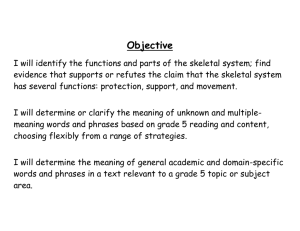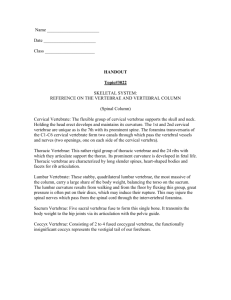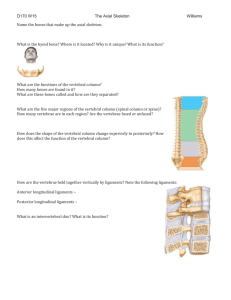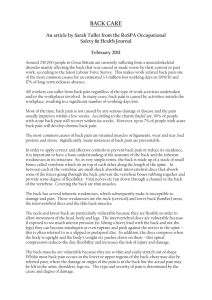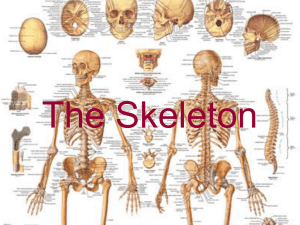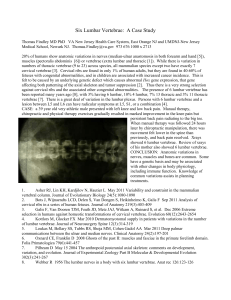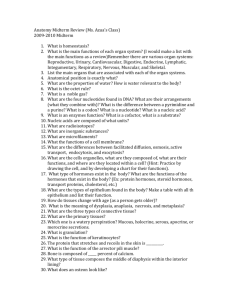16332 - Museum of London
advertisement
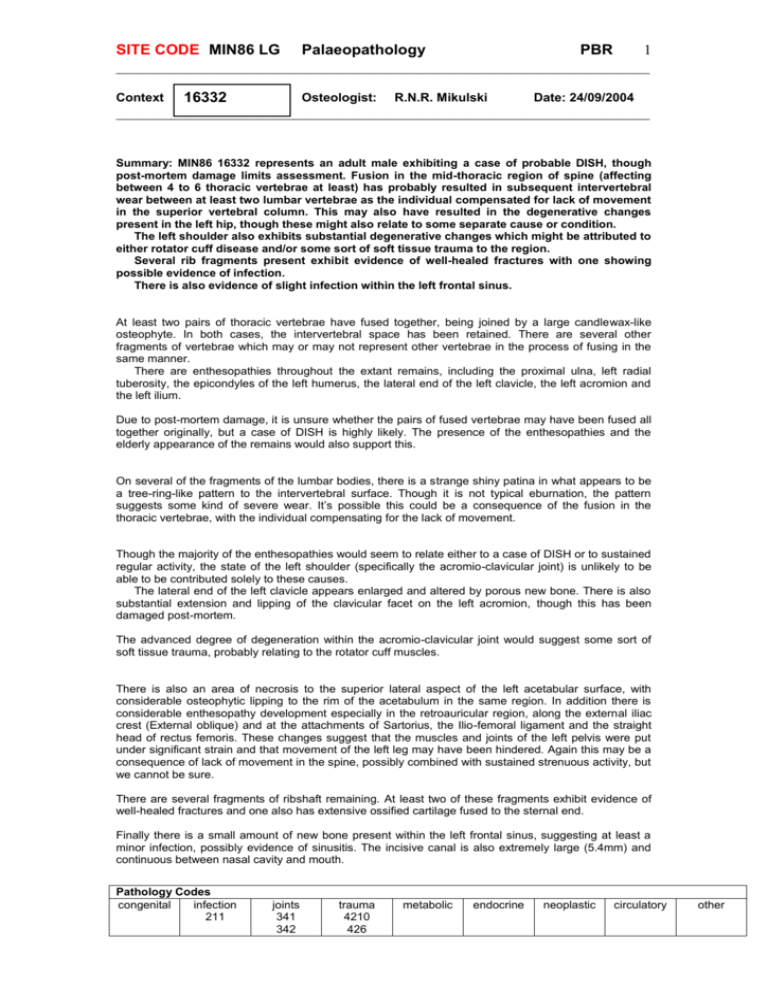
1 SITE CODE MIN86 LG Palaeopathology PBR _____________________________________________________________________ Osteologist: R.N.R. Mikulski Date: 24/09/2004 16332 _____________________________________________________________________ Context Summary: MIN86 16332 represents an adult male exhibiting a case of probable DISH, though post-mortem damage limits assessment. Fusion in the mid-thoracic region of spine (affecting between 4 to 6 thoracic vertebrae at least) has probably resulted in subsequent intervertebral wear between at least two lumbar vertebrae as the individual compensated for lack of movement in the superior vertebral column. This may also have resulted in the degenerative changes present in the left hip, though these might also relate to some separate cause or condition. The left shoulder also exhibits substantial degenerative changes which might be attributed to either rotator cuff disease and/or some sort of soft tissue trauma to the region. Several rib fragments present exhibit evidence of well-healed fractures with one showing possible evidence of infection. There is also evidence of slight infection within the left frontal sinus. At least two pairs of thoracic vertebrae have fused together, being joined by a large candlewax-like osteophyte. In both cases, the intervertebral space has been retained. There are several other fragments of vertebrae which may or may not represent other vertebrae in the process of fusing in the same manner. There are enthesopathies throughout the extant remains, including the proximal ulna, left radial tuberosity, the epicondyles of the left humerus, the lateral end of the left clavicle, the left acromion and the left ilium. Due to post-mortem damage, it is unsure whether the pairs of fused vertebrae may have been fused all together originally, but a case of DISH is highly likely. The presence of the enthesopathies and the elderly appearance of the remains would also support this. On several of the fragments of the lumbar bodies, there is a strange shiny patina in what appears to be a tree-ring-like pattern to the intervertebral surface. Though it is not typical eburnation, the pattern suggests some kind of severe wear. It’s possible this could be a consequence of the fusion in the thoracic vertebrae, with the individual compensating for the lack of movement. Though the majority of the enthesopathies would seem to relate either to a case of DISH or to sustained regular activity, the state of the left shoulder (specifically the acromio-clavicular joint) is unlikely to be able to be contributed solely to these causes. The lateral end of the left clavicle appears enlarged and altered by porous new bone. There is also substantial extension and lipping of the clavicular facet on the left acromion, though this has been damaged post-mortem. The advanced degree of degeneration within the acromio-clavicular joint would suggest some sort of soft tissue trauma, probably relating to the rotator cuff muscles. There is also an area of necrosis to the superior lateral aspect of the left acetabular surface, with considerable osteophytic lipping to the rim of the acetabulum in the same region. In addition there is considerable enthesopathy development especially in the retroauricular region, along the external iliac crest (External oblique) and at the attachments of Sartorius, the Ilio-femoral ligament and the straight head of rectus femoris. These changes suggest that the muscles and joints of the left pelvis were put under significant strain and that movement of the left leg may have been hindered. Again this may be a consequence of lack of movement in the spine, possibly combined with sustained strenuous activity, but we cannot be sure. There are several fragments of ribshaft remaining. At least two of these fragments exhibit evidence of well-healed fractures and one also has extensive ossified cartilage fused to the sternal end. Finally there is a small amount of new bone present within the left frontal sinus, suggesting at least a minor infection, possibly evidence of sinusitis. The incisive canal is also extremely large (5.4mm) and continuous between nasal cavity and mouth. Pathology Codes congenital infection 211 joints 341 342 trauma 4210 426 metabolic endocrine neoplastic circulatory other
